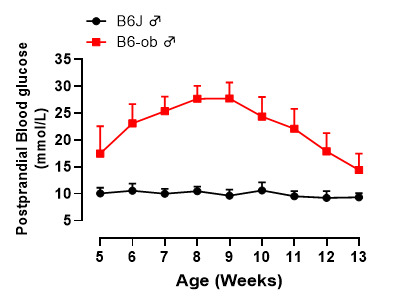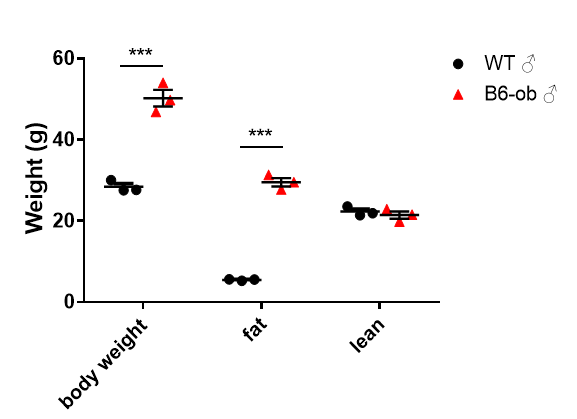Leptin is a protein hormone secreted by adipose tissue and encoded by the Lep gene (also known as the ob gene). A homozygous mutation in this gene results in an increased number and size of adipocytes, overeating, transient mild glucose elevation, poor glucose tolerance, and elevated plasma insulin in mice. At the same time, mice exhibit hypometabolism, hypothermia, and fertility, slow wound healing, and increased secretion of pituitary and adrenal hormones.
A Lep gene frameshift mutation was generated in C57BL/6JGpt- mice using gene editing technology and blastocyst injection. Homozygous mice started to develop an obese phenotype at about 4 weeks, up to three times the body weight of wild-type mice, making it an ideal model for obesity research.
Data of B6-ob
1. B6-ob mice gain weight rapidly after 4 weeks of age

2. B6-ob mice show transient hyperglycemia

3. B6-ob mice show increased body weight and body fat

Data presented as mean ± SEM, ***P<0.001, unpaired t test.

